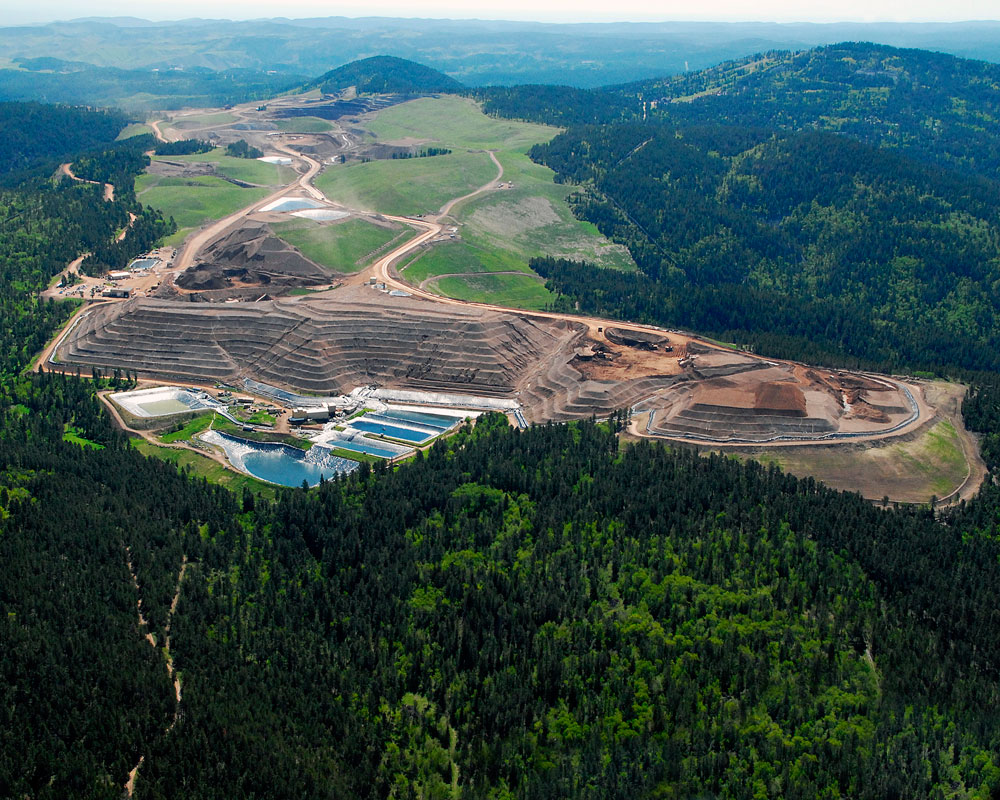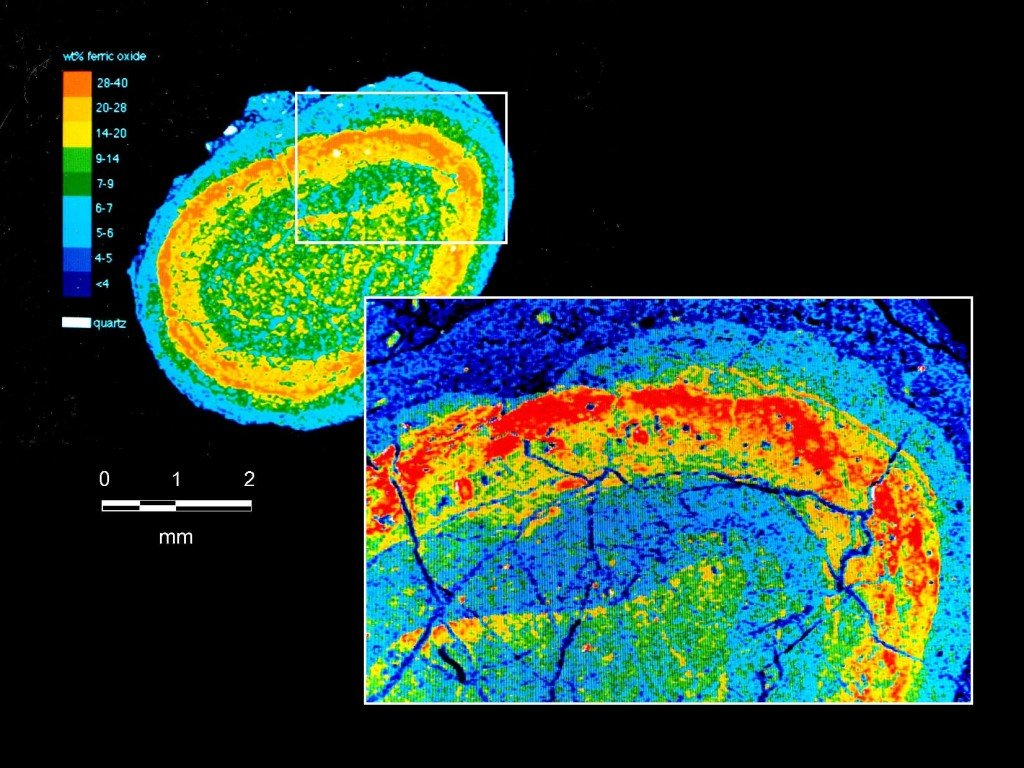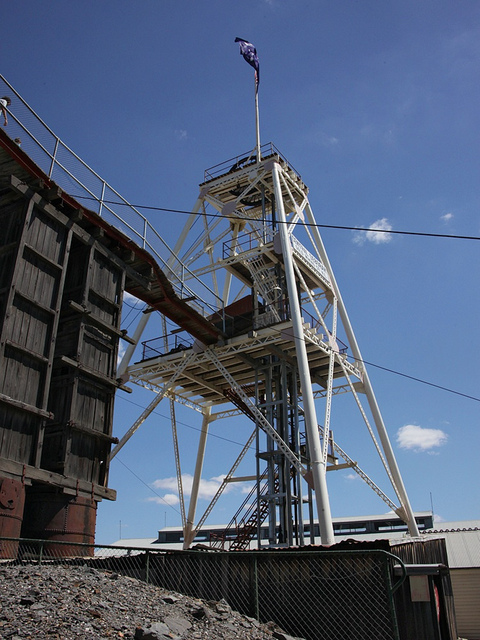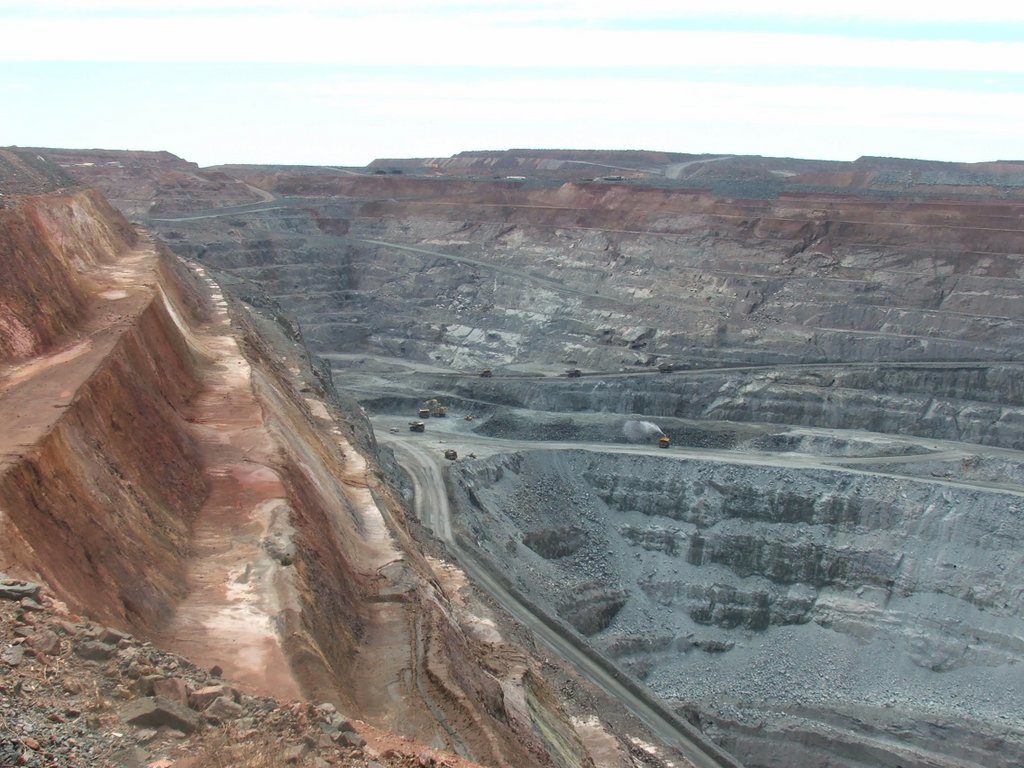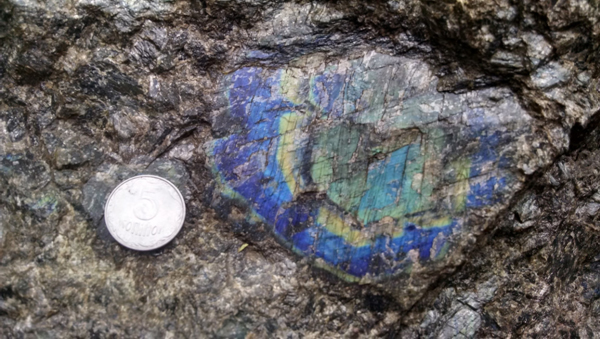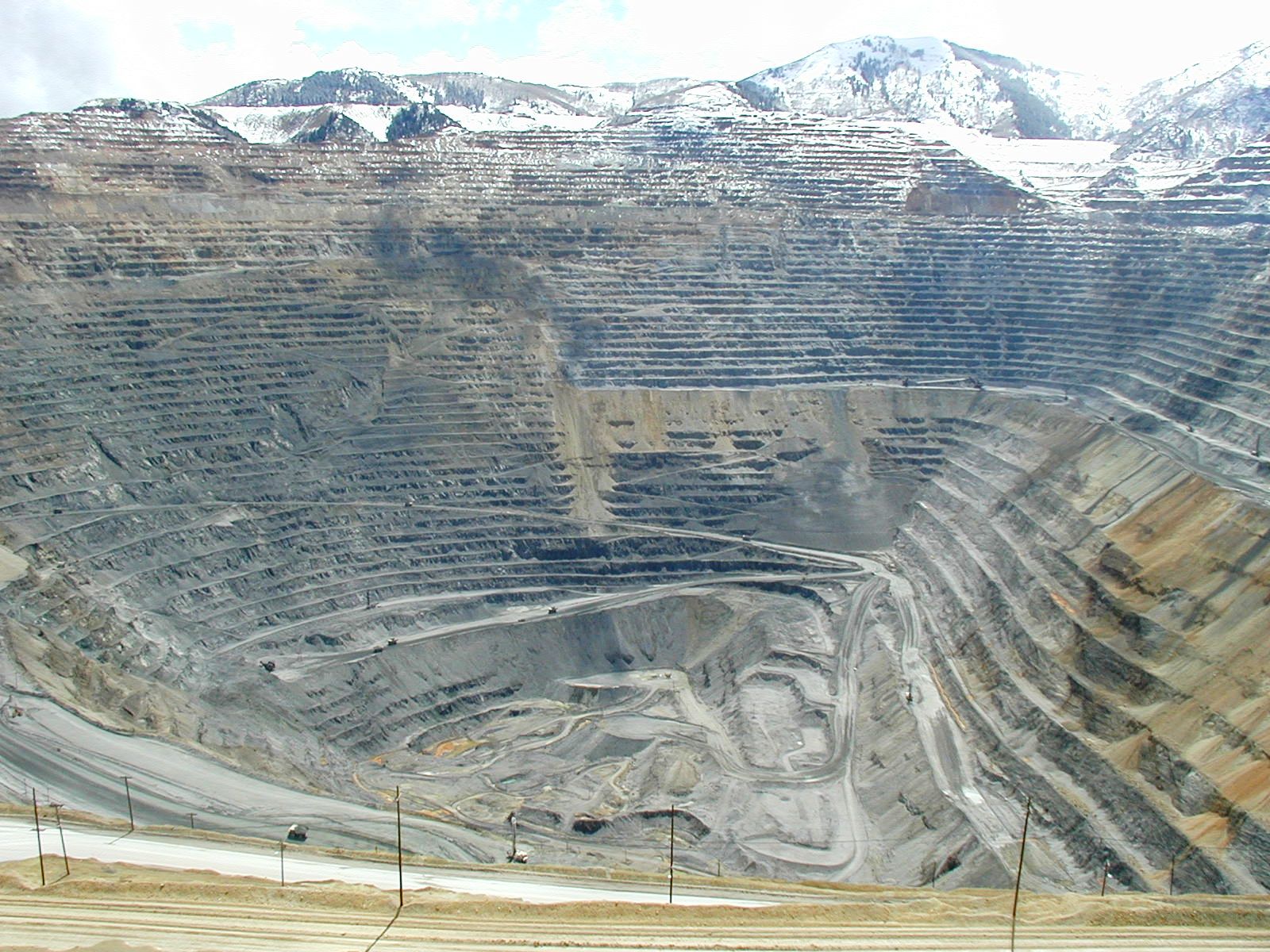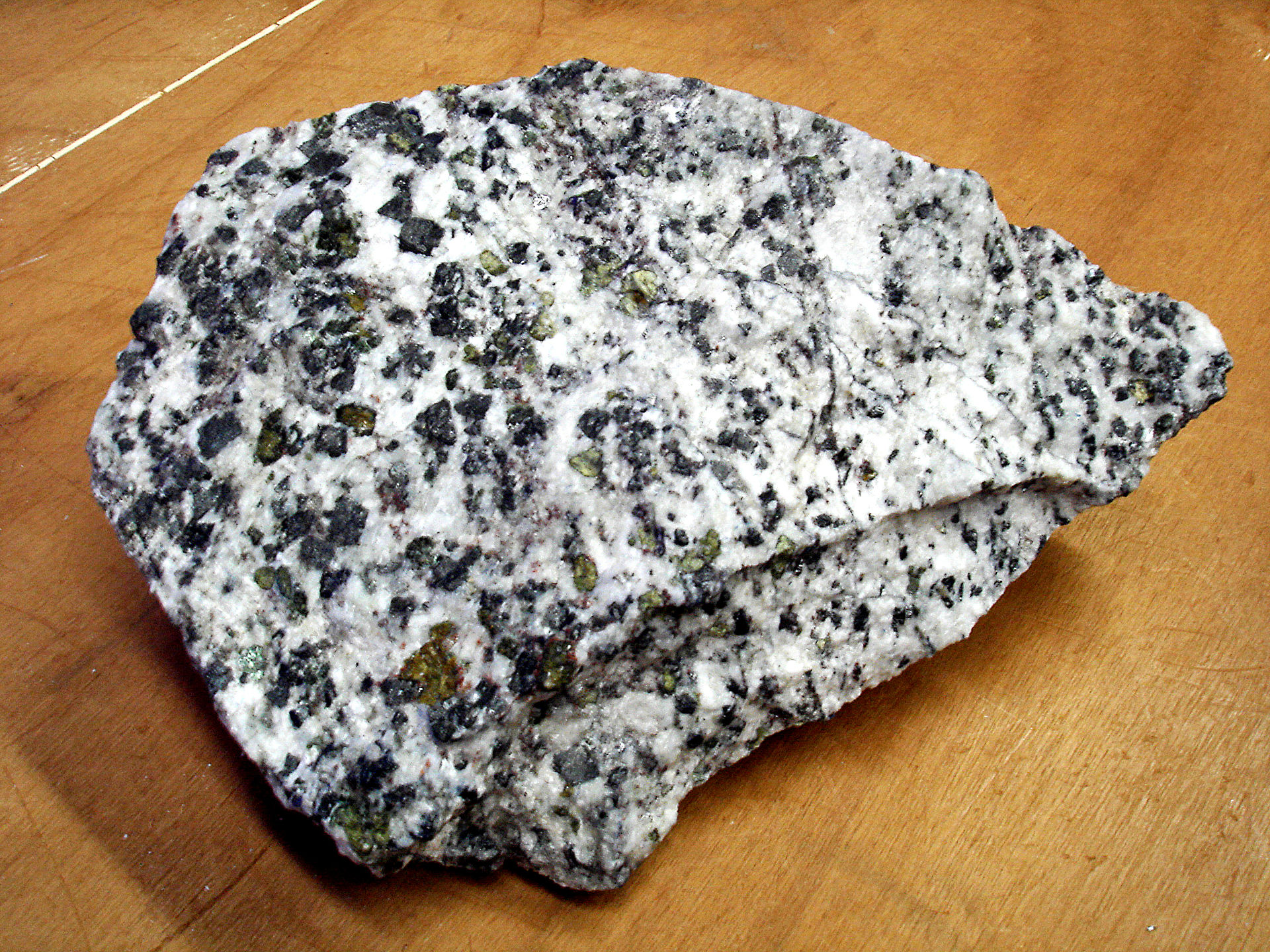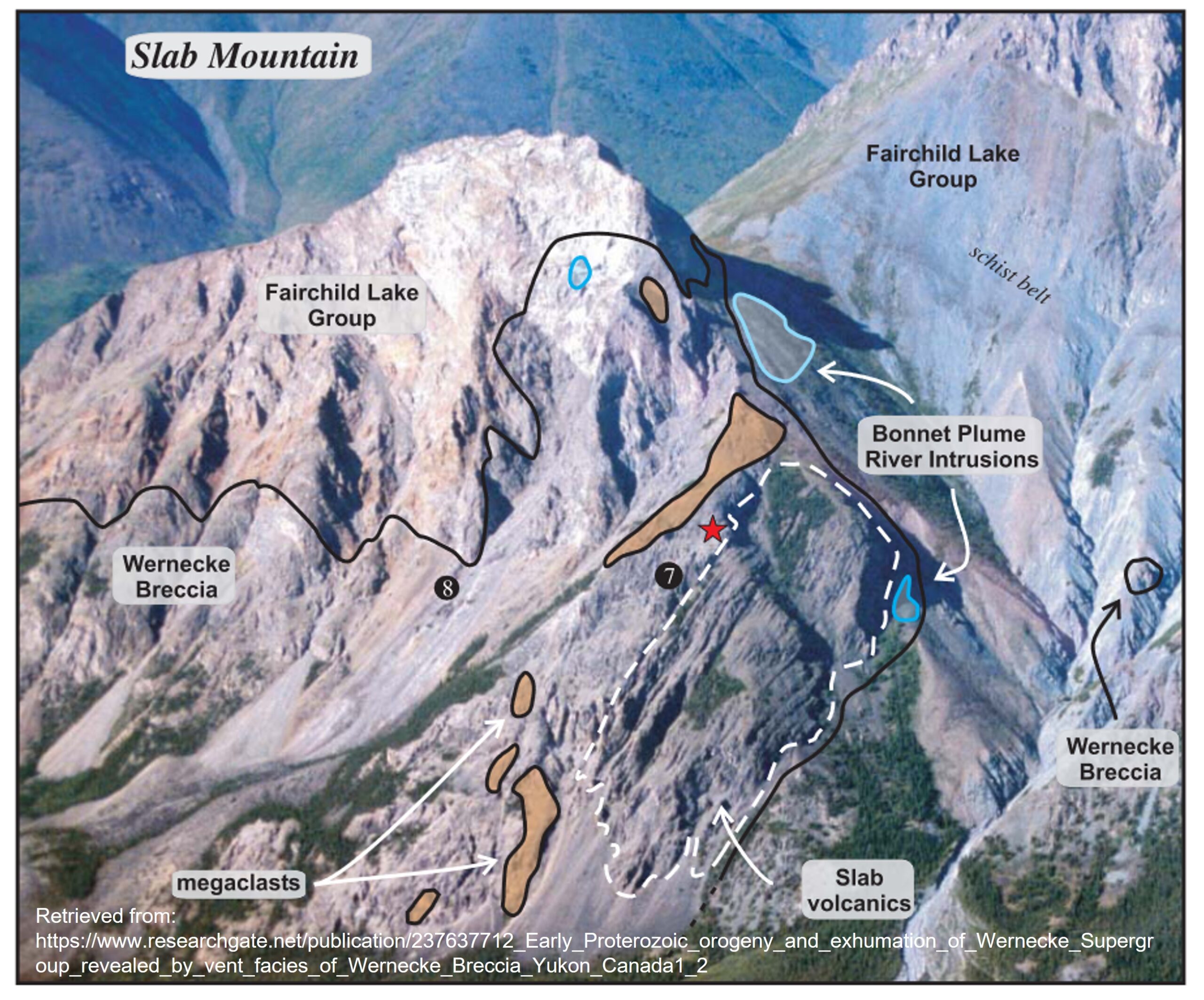Outline
South Dakota is historically known for its gold production. The metal was first discovered near the city of Lead in 1874. The most famous deposit in the region, Homestake, was the largest and deepest gold mine in North America until it closed in 2002. The Homestake Mine, now a science lab, produced more than 40 million ounces of gold during its lifetime. Currently, Wharf is the only operating large gold mine in South Dakota.
Project Overview
The Wharf mine is located in the Bald Mountain mining district of western South Dakota. During its 30+ years of operation, Wharf has produced more than 3 million ounces of gold. The Wharf mine is owned by US-based Coeur Mining Inc. (NYSE:CDE), which acquired the operation in 2015 from Goldcorp Inc., now a subsidiary of US-based Newmont Corporation (NYSE:NEM).
The life of mine of Wharf is estimated at around six years. As of May 2021, Wharf’s total proven and probable reserves were projected at 720,000oz. The Wharf mine is an open-pit heap leach mining operation (Figure 1). Mined ore is crushed, piled in leaching pads, and soaked with a cyanide solution that leaches out the metals. Cyanide and water used in the ore processing at the Wharf mine are kept in a closed-loop system.
Production at Wharf increased between 2019 and 2020, with future exploration activities planned.
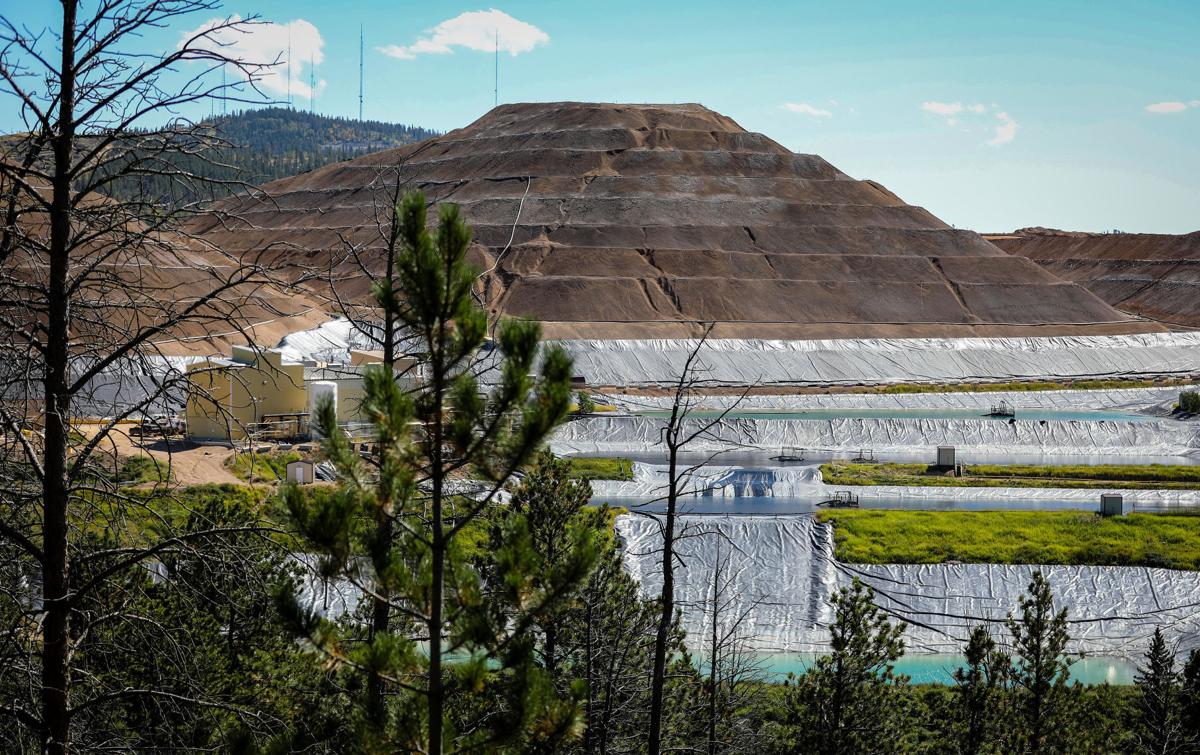
Geology
Wharf is situated in the northern part of the Black Hills, about 4 km west of Lead, South Dakota (Figure 2). The Black Hills area is made up of Precambrian (> 542 million years old) metamorphic rocks enclosed by Paleozoic (542-251 million years old) sedimentary rocks, which are intruded by Tertiary (65-2.6 million years old) igneous rocks.
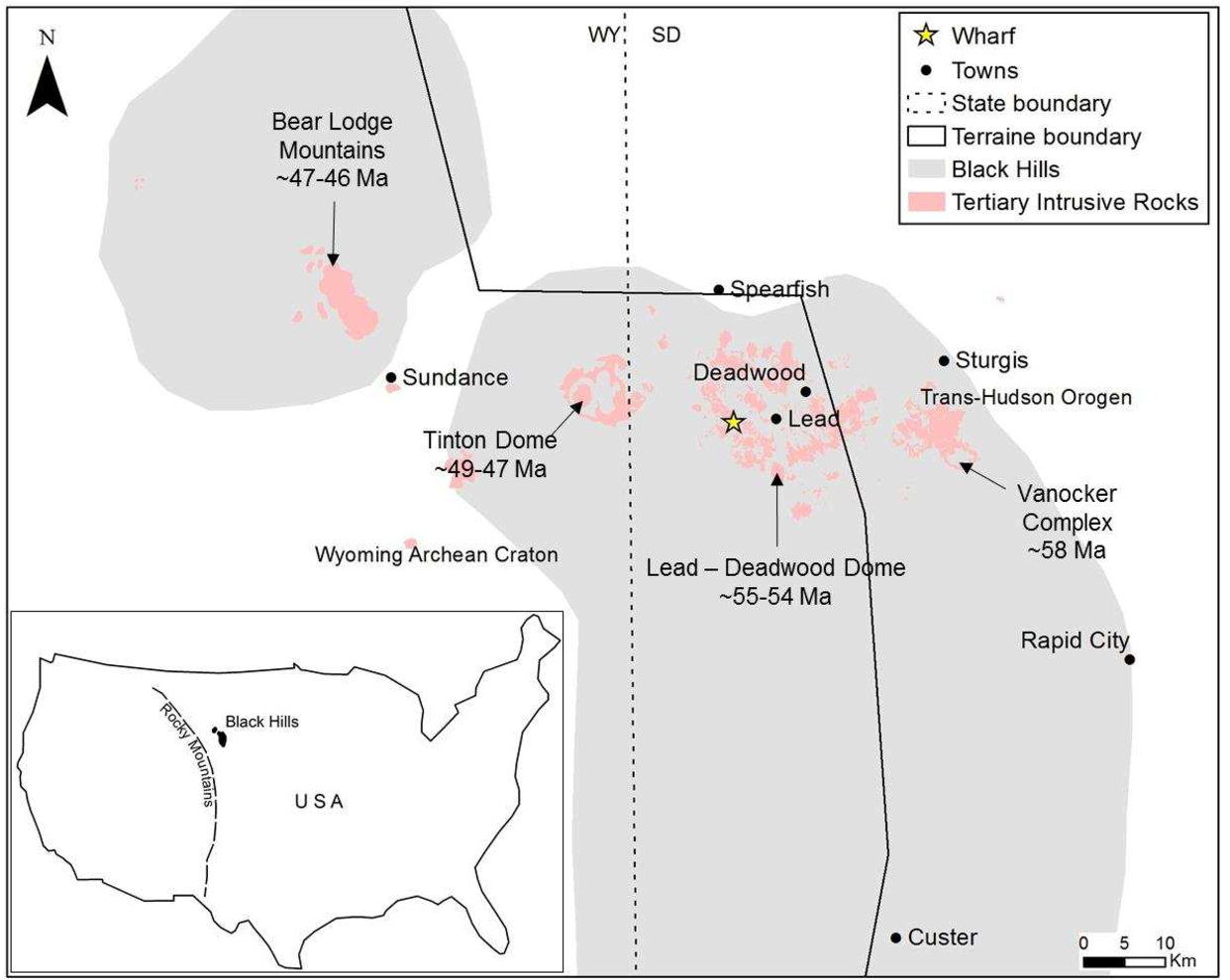
Several types of gold deposits are related to the Black Hills. These include iron formation-hosted and quartz vein Au deposits, paleoplacer Au deposits, and epithermal Au-Ag deposits (Figure 3A). These deposits are associated with three of the four igneous centers in the northern Black Hills: Bear Lodge Mountains, Tinton Dome, and Lead-Deadwood Dome. Wharf is located within the Lead-Deadwood Dome.
The Wharf mine corresponds to the consolidation of the Golden Reward and Portland mining areas. It includes the Annie Creek, Foley Hill, American Eagle, Portland, and the western part of the Golden Reward (Liberty and Harmony pits) deposits, of which only Deep Portland and Golden Reward are still active (Figure 3B).
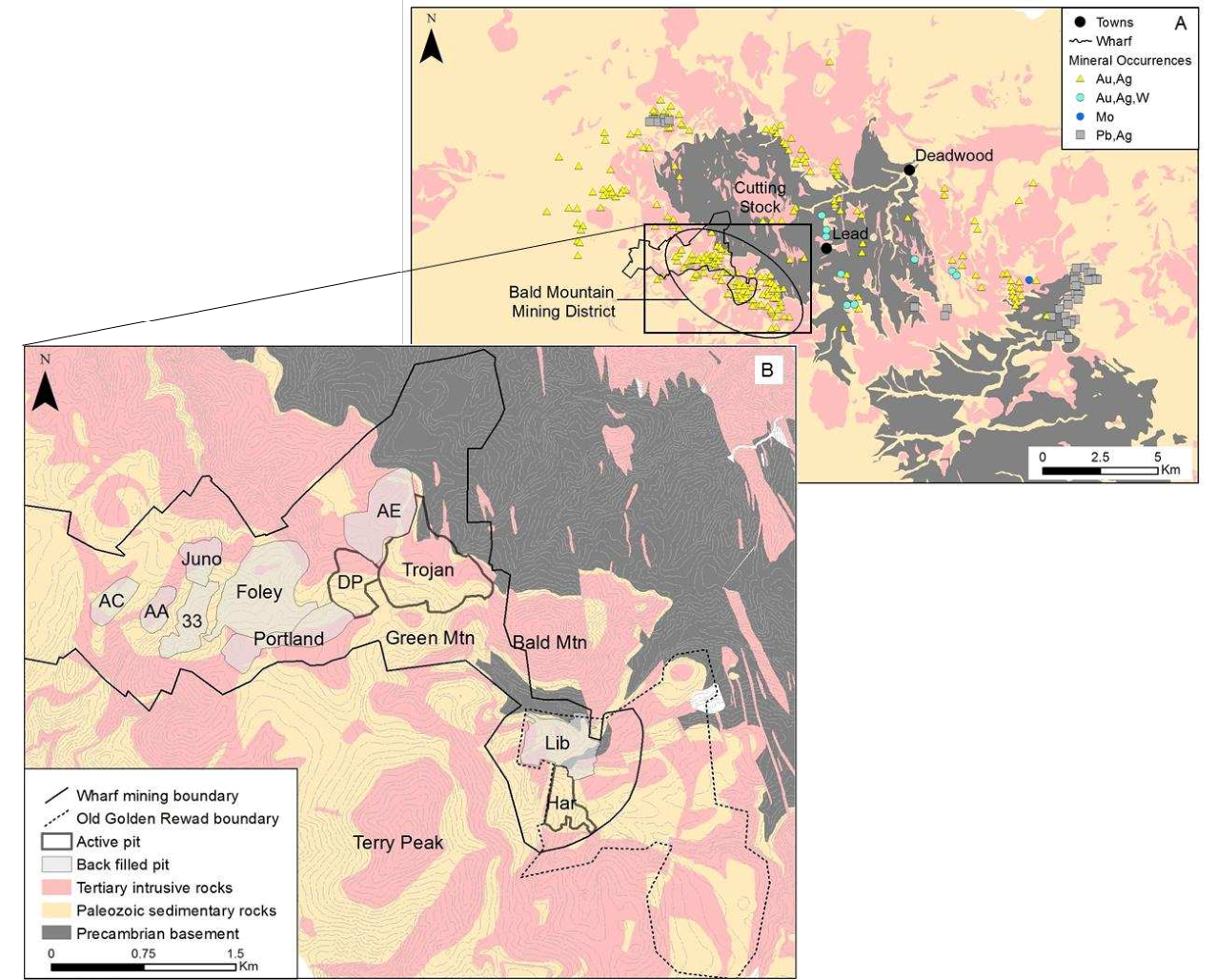
Mineralization
The Wharf area contains several contiguous, structurally controlled gold and silver deposits. The deposits represent typical epithermal Au-Ag deposits hosted by both sedimentary and intrusive igneous rocks. The main host rocks include sandstones of the upper and lower Deadwood Formation, alkaline porphyry intrusions, and breccias.
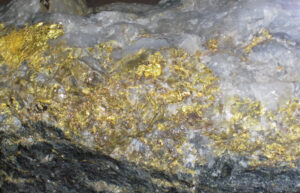
Alteration:
The Wharf operation area is characterized by widespread potassium-rich alteration. Silica-rich alteration in mineralized zones is expressed as quartz veins, stockworks, and as disseminated quartz with sulfides. Silicification (replacement of existing material by quartz) occurs along faults, breccias, and fractures forming 0.1 to 2.0m halos into the host rocks. The mineral fluorite (CaF2) is present as massive pods, crystalline veins or within cavities is commonly observed in mineralized zones. Yet, fluorite is not always associated with mineralization and is considered a late-stage mineral. The increasing intensity of alteration in older rocks suggests protracted mineralization occurred simultaneously and after igneous activity.
Structural controls on mineralization:
Mineralization is structurally controlled by high-angle structures. Major trends of mineralization follow the strike of widespread joint sets observed in the upper and lower Deadwood Formation. Sandstone units of the Deadwood Formation crosscut by multiple silicified structures are characterized by manto-like replacement mineralization. Manto-type deposits are flat-lying, elongated hydrothermal orebodies focused along the bedding plane and typically form due to the replacement of sedimentary strata.
Igneous vs. sedimentary mineralization:
Rock type also controls mineralization. The bulk of the mineralized material at Wharf comes from igneous rocks. In igneous rocks, gold and gold-bearing minerals are disseminated in porphyry intrusions or within fractures.
At the Wharf deposit, high-grade mineralization is associated with sedimentary rocks in the lower Deadwood Formation. Mineralized sandstone is typically silica-cemented and oxidizes to red-brown, whereas barren sandstone may have silica or dolomite cement and is tan to gray. High-grade mineralization and manto-like mineralization in sandstone is assumed to reflect its high permeability and the high density of fractures that act as conduits for ore-bearing fluids.
Gold mineralization:
Gold mineralization is usually expressed as disseminated sulfides. Native gold has been observed in association with the minerals hematite, goethite, and jarosite, which are products of the oxidation of iron- and arsenic-bearing sulfides. The occurrence of gold with fluorite is interpreted to indicate a minor late-stage mineralizing event.
Investor Takeaways
Gold production at the only large-scale active mine in South Dakota is on the rise. In 2020, Wharf produced 93,056 ounces of gold and 115,000 ounces of silver – both records are higher than in 2019. On top of that, new exploration activities are forecast in the nearest future. Coeur is planning to drill up to 2,000 feet deep holes with up to 200 drill pads around the southern edge of the Wharf mine.
